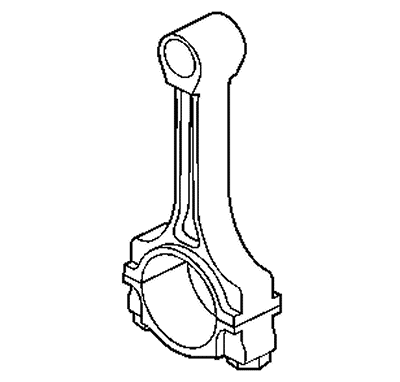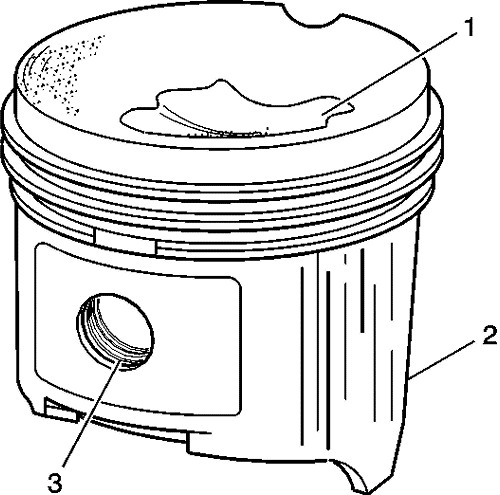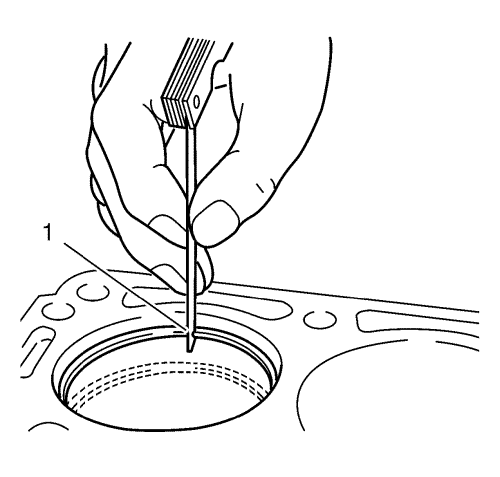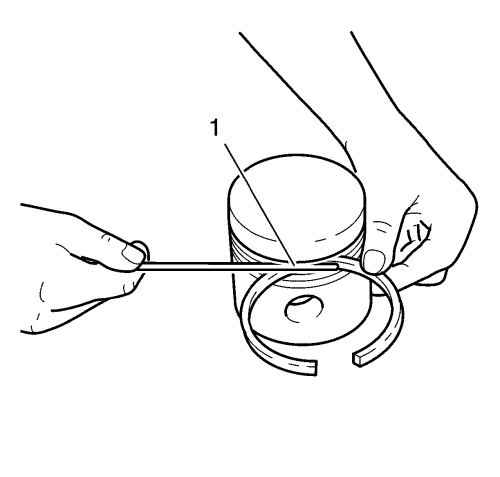- Install the connecting bearings and the connecting rod bearing caps.
- Tighten the connecting rod bearing cap bolts in the following sequence:
Caution: Refer to Fastener Caution in the Preface section.
| | Note: The old bolts can be reused for the measuring procedure. |
| 2.1. | Tighten the connecting rod bearing cap bolts to 20N·m(15 lb ft). |
| 2.2. | Tighten the bolts to an additional 40°. |
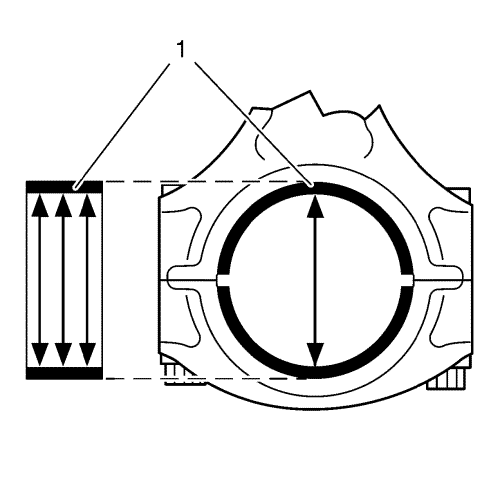
- Measure the connecting rod bearing diameters at 3 points as shown (1). Use an internal measuring device.
- Calculate the average connecting rod inner diameter.
Formula: 1.result + 2. result + 3. result / 3
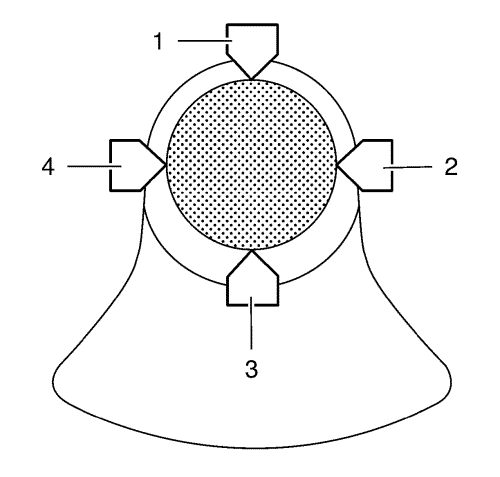
- Measure the connecting rod journal diameter at 2 points between 1 and 3 and between 2 and 4. Use a micrometer gauge.
- Calculate the average connecting rod journal diameter.
Formula: 1. result + 2. result / 2.
- Subtract the average connecting rod journal diameter from the average connecting rod bearing diameter in order to determine the connecting rod bearing clearance.
Refer to Engine Mechanical Specifications to find the permitted values.
